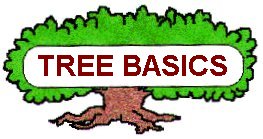

MICHIGAN FORESTS FOREVER TEACHERS GUIDE
| MICHIGAN FOREST FACTS |
 |
| Forest Timeline |
| Ice Age |
| Pre-Settlement |
| Logging Era |
| Conservation |
| Modern Forestry |
The forests of Michigan are regularly inventoried by the U.S. Forest Service, the Michigan Department of Natural Resources, and various industries. The U.S. Forest Service data is generally considered as offering the best "picture" of our forest resources on a statewide basis. Inventories were conducted in 1935, 1955, 1966, 1980, and 1993. Some of the highlights of these inventories and other inventories are as follows.
Most of Michigan's forest lies within the northern two-thirds of the state. More of the land in the south is covered with farms, cities, and roads. However, no matter where you live in Michigan, you're not more than a half-hour drive from a forest.
While most of Michigan's forest lies in the north, most of the wood-based forest industries are in the south. This has a lot to do with how Michigan was settled and our history unfolded.
Today, Michigan forests continue to be an important part of our economy. Most experts think that the industry is worth over nine billion dollars!
Forest management varies by ownership. Ownership patterns change over time. More people are buying forest land, so the average-sized ownership is becoming increasingly smaller. This often makes management more difficult.
"Individuals" are regular people who own camps or forest land for any other
reason.
"State" includes state
forests, parks, and other properties.
"Federal" includes
mostly national forests.
"Corporate" means
companies that own forest land but do not have a wood-using mill.
"Forest Industry" are
corporations that own a wood-using mill.
Michigan forests can be sorted in five general kinds of forests. The most common type is upland hardwoods. These are forests of maple, oak, hickory, and paper birch.
Upland conifers are species such as pines, balsam fir, and white spruce. Swamp conifers are tamarack, black spruce, and white cedar.
Swamp hardwoods are elms, ash, cottonwood, and balm-of-Gilead.
Aspen is mostly quaking aspen and bigtooth aspen.
 |
This website was developed and created by Michigan State University Extension for the teachers of the State of Michigan. |